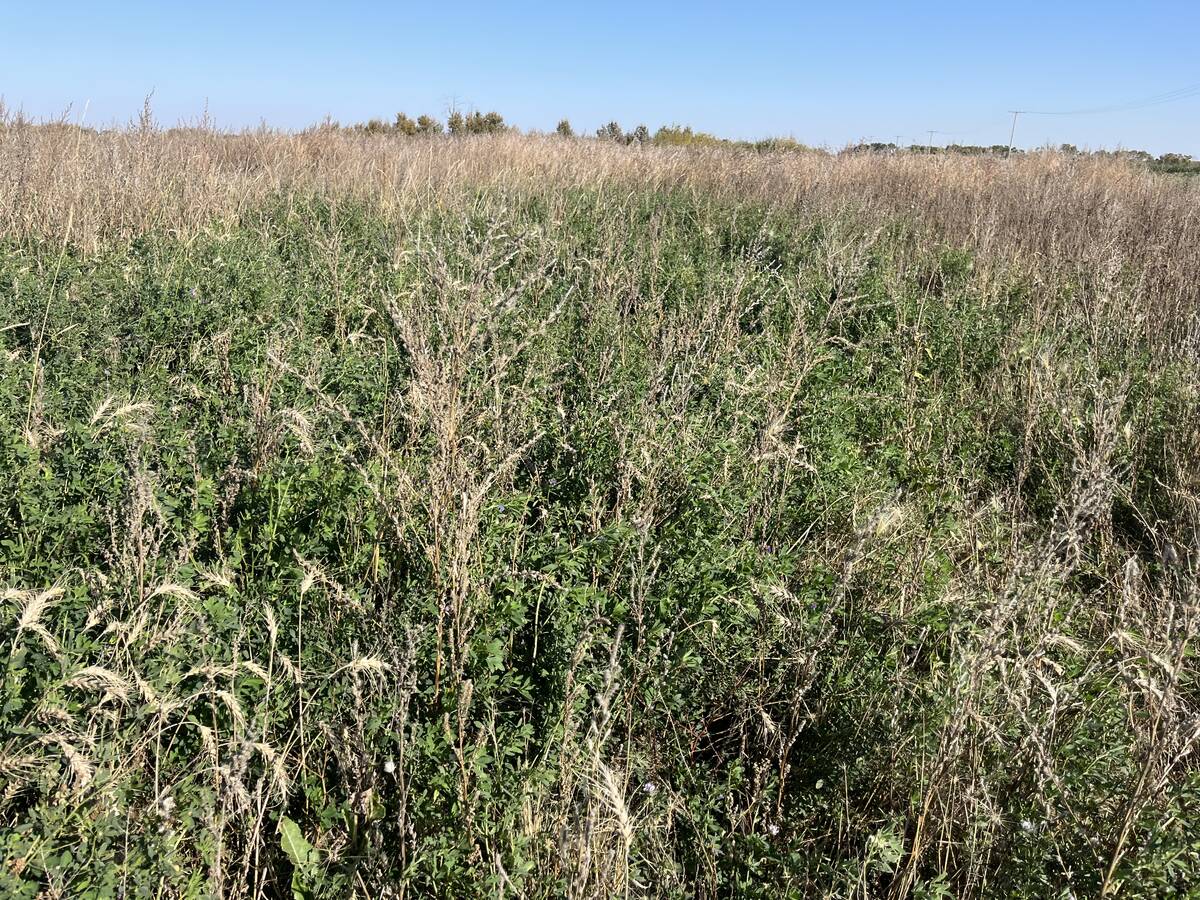Western Hog Exchange | Official says new animal handling procedures will be introduced and better training for staff provided
Mistakes were made at a central Alberta hog assembly yard where an undercover video showed pigs being kicked, slammed with gates and hit with prods.
“I believe as an industry we can learn from it, and I pledge we will do better,” said Brent Moen, chair of Western Hog Exchange.
“We should have realized it was only a matter of time before they came looking for us.”
A member of animal rights group Mercy for Animals shot two months worth of undercover video earlier this year.
Read Also

Dormant seeding forages frees up farmer time and gets ahead of weeds
Dormant seeding isn’t common practice and can appear daunting, but there are some techniques to give Manitoba farmers an edge
Alberta Pork and the hog exchange were immediately informed about the video, which eventually appeared on the television news program W-5 Oct. 11.
Moen said viewers of the program told him the treatment of the pigs was disgusting, cruel, inhumane and disrespectful of the animals.
He told the Alberta Pork annual meeting that he was allowed to watch the video before he was interviewed by the program.
Immediately after seeing the film, a team of advisers was formed, in-cluding Olymel, Alberta Pork, Canadian Pork Council, Western Hog Exchange, the Ag and Food Ex-change and the public relations firm Adfarm.
Animal welfare auditor Jennifer Woods and veterinarian Egan Brock-hoff were hired to do an independent audit of the facility, and new animal handling procedures are being written.
Moen said there was a disconnect between written procedures and actual implementation of how animals should be handled.
He said the exchange’s problems started at the farm level when compromised animal were shipped.
It is not uncommon for producers to ship animals that are in poor shape because they figure there is salvage value, but Moen said they may have forgotten that culled sows or boars can travel another 1,600 kilometres to reach a processing plant after arriving at the assembly yard.
He said there will be more education and training for producers, transportation staff and exchange management. There will also be regular outside audits.
Transporters will face penalties if they bring in compromised animals, and the message will go back to the farm. That could include euthanizing the animal and sending the producer a bill for $200.
“If we can’t get significant change in attitude with a carrot, then we will move to introducing actions with a stick,” Moen said.
The pork quality assurance program’s animal welfare component must also be followed.
Brockhoff, who works with Prairie Swine Health Services in Red Deer, said this will not be the last incident.
Videos of inhumane practices and social media campaigns on animal abuse prompt the public to demand further protection, he added.
“People are getting information from people who are not raising hogs and don’t farm.”
Animal welfare science is growing, but the public is often skeptical about research reports.
“For too many years we have tried to lay the studies out,” Brockhoff said.
“It doesn’t work. We have to put emotion behind this. We have to make it matter to people.”
Farms also have to look at what they are doing and how workers are trained.
“I am sure all of us want to ensure the highest standards of welfare and never have to deal with abuse. But we have to face ourselves in the mirror with this,” he said.
“If you want to make a difference, you have to teach people about stockmanship and animal handling.”
They have to be able to take those skills home and train other people in the barns about how to behave.
Farm managers have to set clear expectations of animal handling techniques. Don’t say prods are not allowed and then look the other way when they are used.
Good stockmanship takes practice, and people working with livestock need to practice and think about it consciously every day.
“We can’t have lapses,” he said.
“When we have a lapse, someone has a video camera and that is what they show the world.”
Geraldine Auston of the Ag and Food Exchange network said the farming sector has to build public trust in Canadian agriculture and food production.
The network advises clients about upcoming trends, understanding of potential problems, early warnings and crisis response.
“We do not support animal abuse. We expect clients will take responsibility for animal welfare,” she said at the Alberta pork meeting.
“If someone has done something wrong, they have to own up to it and fix it.… Don’t have anything on your operations you would not want to see on YouTube. You have to fix it.”















